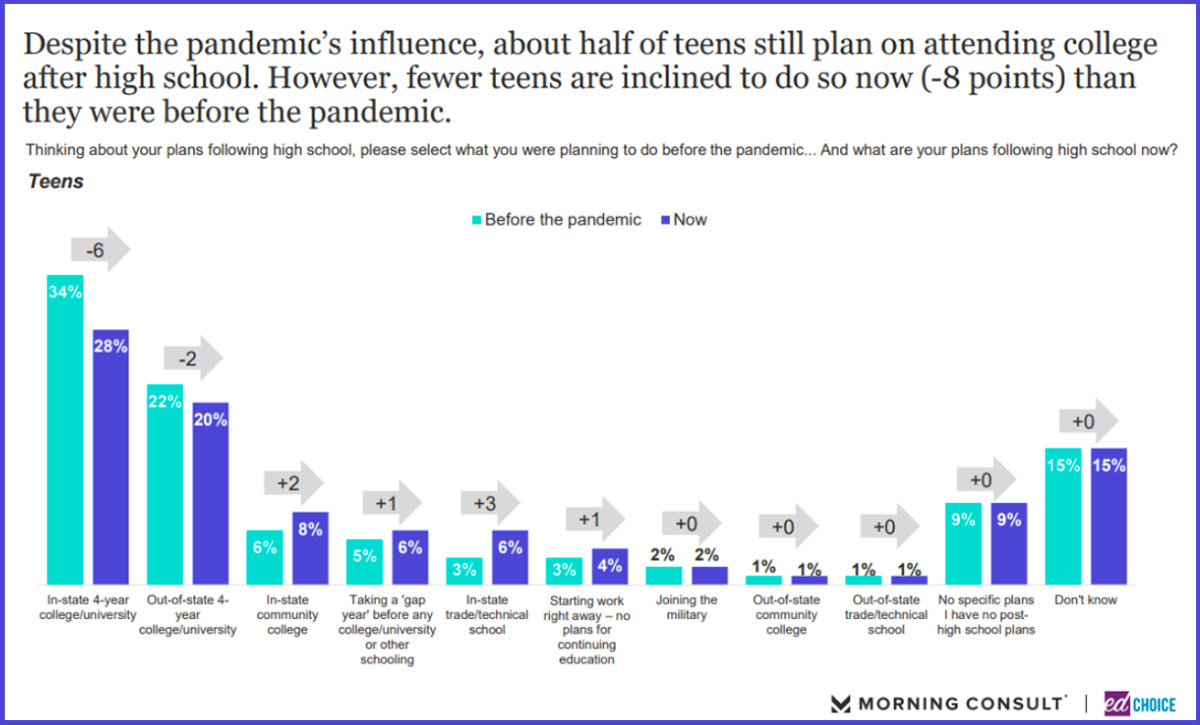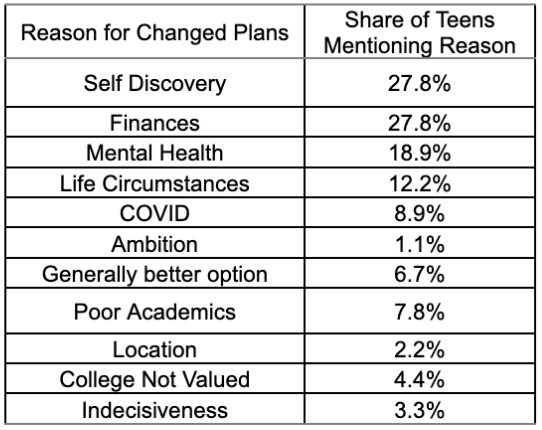Teens Have Changed Their Higher Ed Plans — Survey Shows They May Never Go Back
Kristof & Ritter: COVID-19 forced HS students to re-evaluate their learning plans. If colleges want enrollment to recover, they must adapt

Get stories like this delivered straight to your inbox. Sign up for The 74 Newsletter
Each of the nearly 4 million students who graduated high school this spring faces major decisions this summer. Do they want to pursue further education? If so, what do they want to study and where? How will they afford it? Will they begin working immediately? If so, are they moving out of their family home? Are they prepared for the hassles of adulthood?
According to a recent survey we at EdChoice conducted in conjunction with Morning Consult, teenagers are embracing their agency in an increasingly broad array of choices. What they told us might worry institutions of higher education — because the next generation appears less interested in the traditional college pipeline.
In March, we asked a nationally representative pool of 1,000 teenagers to compare what their post-high school graduation plans were before the COVID-19 pandemic with what their intentions were now, two years later. More than one-third (36%) reported having made changes.
Plans to enroll in a four-year college sustained the biggest blow, with a 14% drop in teens saying they currently planned to enroll at a four-year university compared to before the pandemic.
To put that number in context, spring 2022 enrollment in four-year higher education institutions was 11.7 million students. Hypothetically, if four-year college enrollment were to drop by 14%, about 1.67 million fewer young adults would be choosing higher education.
If that hypothetical became reality, it would have drastic implications for colleges and universities. The average cost of tuition and fees (after deducting grant aid) for an in-state student at a four-year public college or university is $2,640 per year, $14,990 at a private institution. Assuming the ratio of students attending public and private four-year colleges remained constant, those lost 1.67 million students would roughly translate to $10.6 billion per year.
College and university administrators already are dealing with an enrollment crisis. Changing demographics mean there are fewer teenagers, reducing the pool of students colleges can recruit. The COVID-19 pandemic also dramatically affected enrollment, as many young adults decided college was not worth the cost.
Why did the teens in the EdChoice survey change their plans? Of those who provided an explanation, just 8% mentioned COVID-19. They are telling a different story than the common one that projects college enrollment will simply bounce back as the pandemic wanes.
Over a quarter (28%) of teens who explained why they changed their mind about attending college said they had matured over the last two years, learned about other options, shifted their interests or had experienced some other form of self-discovery. About one in seven (14%) of these teenagers were concerned about where they would be located, expressing greater desire to remain close to family or to live in a new area, or citing a change in life circumstances, such as a need to take care of family members.
Another quarter (28%) of this group referenced the cost of college, a preference for earning and saving money immediately or similar financial factors. Nearly one in five (19%) pointed to mental health issues or other indicators that they currently couldn’t handle the burden of being a college student.

These responses indicate that there is no one-size-fits-all solution to keeping students engaged and the student body large enough for schools’ long-term viability. Better financial packages will mean little to students who feel burned out and unprepared for the next stage of life at the ripe old age of 18. Offering the exact programs students are interested in won’t attract them if they know they can’t pay the bills.
COVID-19 forced high schoolers to re-evaluate their approach to learning, their goals and their life circumstances. If higher education wishes enrollment to look like it did before COVID-19, it also needs to adapt to this post-pandemic reality.
Get stories like these delivered straight to your inbox. Sign up for The 74 Newsletter

;)

